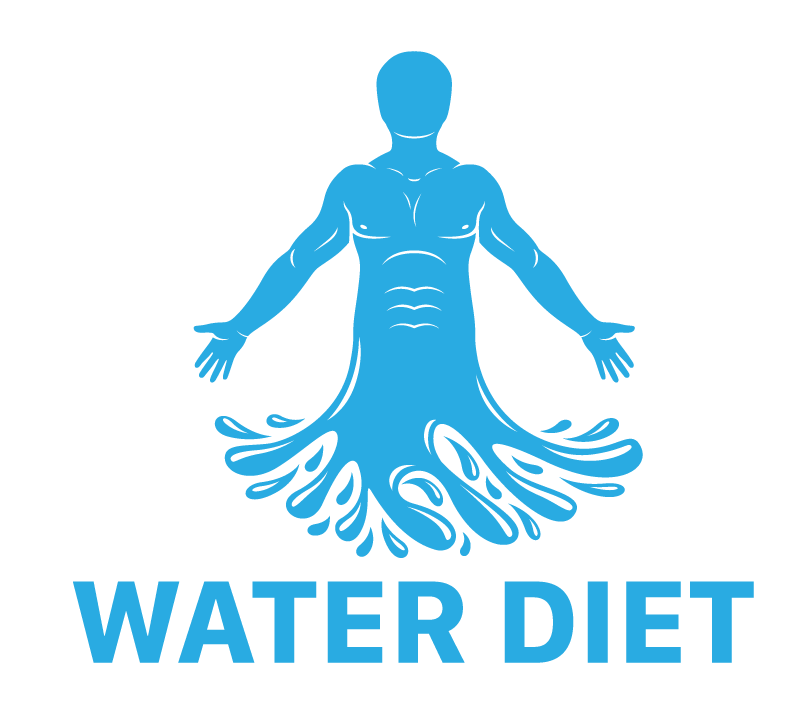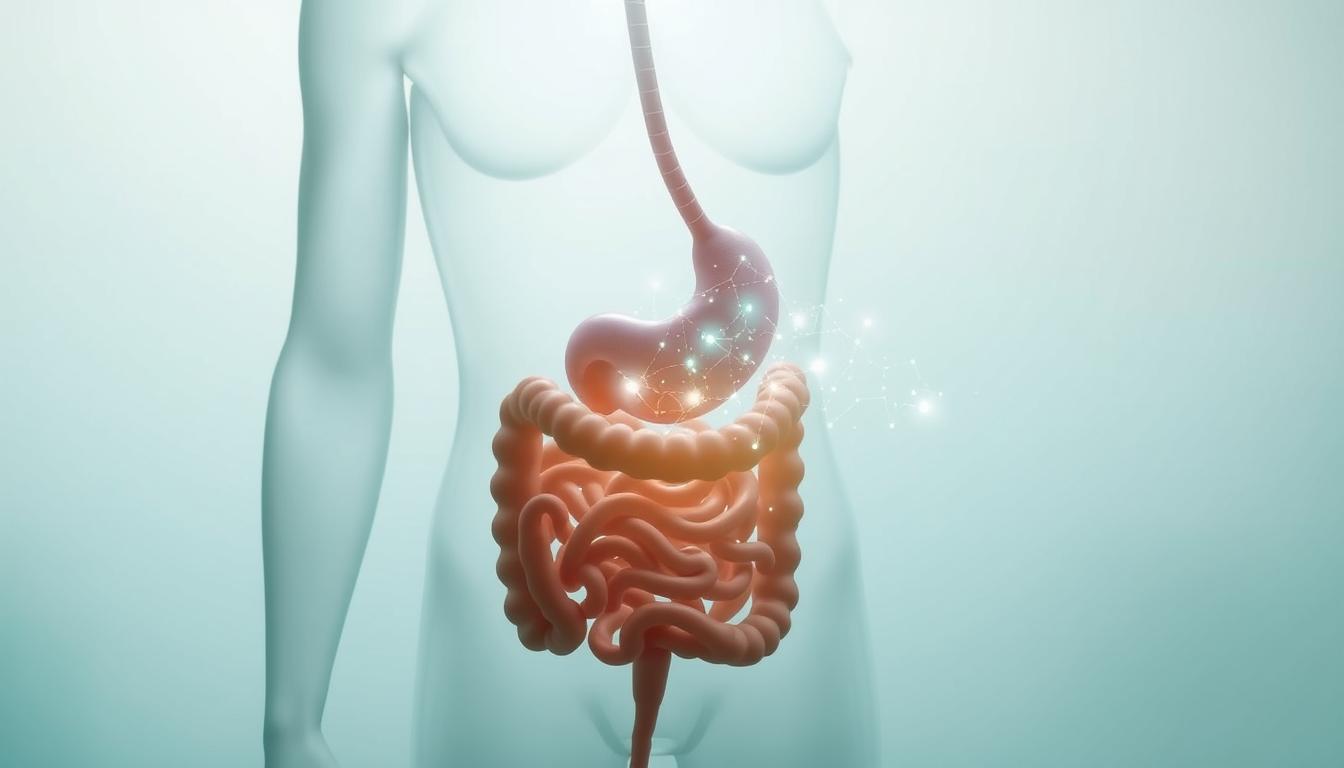Amidst the myriad of dietary approaches claiming to promote weight loss, the water diet has surged in popularity. The question lingers, however, does water diet burn fat, or is it simply a fleeting trend with minimal impact? Water fasting—that is, foregoing food and only drinking water for weight loss—has its roots deep in historical spiritual customs. Today, it’s commended not just for its potential physical benefits but also as a method for longevity and tackling health problems.
In analyzing the water diet effectiveness, one must tread a path of caution. While embracing water consumption as a sole nutritional source, proponents argue for significant fat loss achievements. Conversely, skeptics point to the health threats posed and the importance of considering individual health conditions before plunging into such a restrictive regimen. Unveiling the reality necessitates a balance between embracing potential health perks and heeding the medical counsel geared toward safe practices.
Key Takeaways
- Water fasting has historical and religious origins, now adopted for weight management.
- Health aficionados tout it as a means to potentially reduce weight and foster cellular health.
- Questions persist regarding the longevity and effectiveness of fat loss through water diets.
- Comprehensive evaluation of risks and benefits is crucial before one undertakes water fasting.
- Medical consultation is advised to navigate the nuances of water fasting safely.
- Essential to this diet’s success is a considered approach to its potential health impact.
Understanding Water Fasting and Its Popularity
The practice of water fasting has garnered attention in the health and wellness community for its purported water fasting benefits. What used to be a ritual steeped in historical and spiritual nuances has transformed into a modern health regimen. Individuals keen on exploring the realms of personal well-being are now turning to this age-old practice, gearing up towards a journey that blends the wisdom of the past with the aspirations of the present.
Steering away from the confines of strict dietary regulations and venturing into the simplicity of water fasting requires careful contemplation and understanding of its origins and intentions. Here’s why it has become such a captivating choice for those looking to tap into its potential.
Historical and Modern-Day Fasting Practices
Fastings, such as abstaining from food for specific periods, have long been embedded in the cultural and spiritual reasons for fasting among various societies. With a lineage dating back to ancient times, these acts were revered for their discipline and the belief in fostering a closer spiritual connection. Today, contemporary culture has adapted these historical fasting practices to serve a dual purpose – as a compass to spiritual enlightenment and an adjunct to modern medicine.
Spiritual and Health Reasons Behind Water Diets
What sets water fasting apart is its dual appeal – satisfying the quest for spiritual grounding as well as addressing the mounting concerns of physical health. With a clear flow of intentions from past to present, individuals take up health-promoting fasting for a plethora of reasons, ranging from seeking inner peace to managing weight and mitigating health issues. The elegance of this practice lies in its simplicity yet profound impact, stretching beyond the temporal body to the realms of the mind and spirit.
| Aspects of Well-being | Benefits of Water Fasting |
|---|---|
| Physical Health | Potential weight management and autophagy stimulation |
| Mental Clarity | Reported heightened focus and reduced mental clutter |
| Spiritual Fulfillment | Enhanced spiritual awareness and mindfulness |
| Longevity | Association with longevity based on historic anecdotes |
Despite its growing popularity, it’s imperative to approach water fasting with caution, recognizing that there are no universal guidelines for its practice. Certain groups are advised to steer clear or seek medical guidance, a testament to the importance of individual nuances in the pursuit of health. As with any dietary venture, the balance between the anticipated water fasting benefits and the inherent individual health considerations dictates the responsible embrace of this timeless ritual.
Does Water Diet Burn Fat? Examining the Evidence
The practice of water fasting has been perceived by many as an expressway towards achieving water diet weight loss. This method, characterized by null food intake and high water consumption, purportedly hinges on the body’s ability to shift towards burning fat in the absence of incoming calories. Yet, understanding the dynamics of does water diet burn fat demands a more nuanced approach that considers the type and duration of weight lost.
In the realm of diets and weight management strategies, hydration plays a crucial yet often overlooked role. Intrinsically linked to hydration and weight loss, water fasting stands out as an intriguing subject for those seeking to shed extra pounds. But does it lead to durable fat loss, or merely offer a temporary dip on the scales?
Research points to mixed results, indicating that while weight can decrease during a water-only diet, the loss isn’t necessarily indicative of fat alone. The body initially taps into its carbohydrate stores, known as glycogen, which binds to water molecules. When glycogen is consumed for energy, it releases this water, leading to significant weight reduction which can be mistaken for fat loss.
Moreover, there’s an ongoing discussion regarding the efficacy of water diets in the long term. While some may experience immediate declines in weight, in many cases, weight is regained once normal eating patterns resume. The transient nature of the water diet weight loss presents a contrast to the prolonged, consistent weight loss strategies widely advocated by health professionals. Encouragingly, the initial drop in weight can boost motivation for some, potentially kickstarting a more sustainable journey towards healthier lifestyle choices.
Dissecting the implications of a water diet on fat is still an evolving field, which calls for comprehensive research to substantiate the claims. The following table presents what is currently known about the short-term effects of water fasting on weight loss:
| Weight Loss Component | Impact during Water Fasting |
|---|---|
| Water Weight | Immediate reduction due to glycogen depletion |
| Fat Mass | Potential reduction; requires further studies for confirmation |
| Muscle Mass | Risk of decrease alongside fat, negatively impacting metabolism |
| Carbohydrates | Initial energy source used; contributes to early weight loss |
| Long-term Metabolic Benefit | Unsubstantiated; may not be sustained post-fast |
Reflecting on the evidence thus far, it’s imperative that anyone considering a water diet does so with both curiosity and caution. While water fasting could play a role in weight reduction, the components of weight loss and the viability of fat burn encompass a broader spectrum of factors. Engaging with experts and incorporating a rounded understanding of diverse weight loss mechanisms is advisable, anchoring the water diet within a larger framework of health and wellness.
The Role of Autophagy in Water Fasting
Water fasting for fat loss has garnered much attention as an adjunct to traditional dieting and exercise. By solely consuming water, it’s believed that the body engages in a process called autophagy which could be instrumental for cellular renewal through fasting and may ultimately contribute to disease prevention.
Autophagy, from the Greek ‘self-eating,’ is a cellular ‘housekeeping’ process that may hold immense implications for health and longevity. Integral to understanding this process is how it ties into the practices of water fasting and contributes to the body’s metabolic functions.
Cellular Renewal and Disease Prevention
Autophagy allows cells to remove malfunctioning components and recycle them, promoting cellular efficiency and renewal. When food is scarce, such as during water fasting, autophagy rates appear to increase, suggesting a survival mechanism that ensures energy production from within. This inherent self-protective process has vast potential implications, including reducing the likelihood of pathologies such as cancer or neurodegenerative diseases like Alzheimer’s. Thus, water fasting may indirectly aid in disease prevention by stimulating the body’s innate recycling capabilities.
Scientific Basis of Autophagy During Fasting
Various studies on autophagy in fasting have illuminated a fascinating intersection between abstention from caloric intake and the body’s defense mechanisms. Animal studies have shown enhanced longevity and reduced disease incidence when autophagy is activated. However, confirmatory human studies remain sparse. More detailed investigations are required to elucidate the full breadth of benefits that water fasting may offer regarding autophagy and its role in promoting health and averting disease.
To paint a clearer picture, consider the following table summarizing the current understanding of autophagy related to water fasting:
| Phase of Fasting | Autophagic Activity | Potential Benefits |
|---|---|---|
| Initial | Moderate increase in autophagy | Cell cleansing and renewal |
| Prolonged | Enhanced autophagic processes | Reduction in disease-risk factors |
| Post-fasting | Normalization to pre-fasting levels | Retained cellular improvements |
The intricacies of autophagy in fasting point to a universe of potential health benefits that extend beyond mere fat loss. As more research emerges, the link between water fasting, cellular renewal, and longevity may strengthen, positioning this age-old practice firmly within the lexicon of modern health strategies.
Expected Physical Reactions to Water Diets
Embarking on a water diet, individuals might anticipate experiencing a range of physiological changes. Not eating food and solely relying on water can manifest a variety of symptoms that reflect the body’s response to this significant dietary adjustment. Recognizing these reactions is critical for anyone considering a water diet to ensure they approach this method with the necessary caution and awareness.
Common Symptoms and Body Responses
Among the common symptoms of water diet, individuals often report feelings of fatigue, which is the body’s natural response to a lack of fuel normally provided by food. Dizziness and weakness may also occur, as energy levels dip drastically when the primary source of calories is absent. Additionally, some people experience nausea, which can be distressing and may indicate the body’s need for nutrients.
Understanding Dehydration and Energy Conservation
Crucial to the experience of water fasting is understanding the risks of dehydration and water fasting. Typically, a substantial portion of daily hydration comes not from drinking water alone, but also from the water content found in food. Consequently, when one fasts, the risk of dehydration can increase, notwithstanding the water intake. Recognizing and addressing the early signs of dehydration is imperative for maintaining balance and health during a water diet.
With limited caloric intake, the body naturally shifts into a mode of energy conservation during fasting. Healthcare professionals often advocate for an increase in water intake to mitigate the risks of dehydration. They further recommend the avoidance of strenous physical activities which can tax the body’s reserves and exacerbate the depletion of energy.
The associated symptoms and recommended precautions for those on a water diet are summarized in the table below:
| Symptom | Recommendation | Purpose |
|---|---|---|
| Fatigue | Increased water intake, rest | Mitigate energy depletion |
| Dizziness | Avoidance of strenuous tasks, careful movement | Prevent falls or injury |
| Weakness | Gradual resumption of activities, emphasis on calm environments | Extra care during vulnerable state |
| Nausea | Sipping water slowly, resting in a seated position | Reduce discomfort and risk of dehydration |
| Dehydration | Regular monitoring of hydration levels, additional water consumption | Ensure adequate hydration |
In conclusion, understanding and preparing for the possible physical reactions and symptoms associated with water diets is essential. Maintaining proper hydration and conserving energy during fasting can prevent unwanted health risks and enhance the fasting experience.
Water Fasting and Weight Loss: Correlation and Causation
The interplay between water fasting and weight loss has been a subject of discussion, as individuals seek to understand the connection between the two. Proponents of water fasting often report significant weight loss, but it is essential to parse out whether this is attributed to fat loss or other factors like water and muscle mass. To explore this correlation further, it is imperative to recognize the physiological responses that come with water fasting, specifically how the body transitions into ketosis and utilizes its energy reserves.
Short-term vs. Long-term Weight Loss Outcomes
Short-term weight loss is one of the most conspicuous outcomes of water fasting. Due to the sharp reduction in calorie intake, the body may begin to utilize fat stores for energy. However, it’s not just fat that is lost during this process. There is also a significant reduction in water weight and sometimes even muscle mass, which can skew the perception of fat loss. For those looking at weight loss through the lens of water fasting, understanding these nuances is crucial. Considering the implications of water and weight loss is a step towards separating myths from facts.
Role of Ketosis in Fat Burning During Water Fasting
The state of ketosis is central when evaluating the effectiveness of water fasting in burning fat. With prolonged fasting, the body depletes its carbohydrate stores and begins to burn fat for energy, leading to the production of ketones. This metabolic state is the basis for the ketosis and fasting dialogue, as it signals a shift to fat as the primary fuel source. While ketosis can signify fat burning, the question remains whether the weight loss experienced from water fasting contributes to long-term fat reduction or if it’s a transient episode marked by the temporary shedding of weight.
| Type of Loss | Effect of Water Fasting | Contribution to Long-term Weight Management |
|---|---|---|
| Water Weight | Immediate decrease due to reduced glycogen stores | Minimal; weight is swiftly regained when normal diet is resumed |
| Fat Mass | Possible reduction; enhanced when the body enters ketosis | Variable; dependent on post-fasting diet and lifestyle choices |
| Muscle Mass | Potential loss alongside fat | Negative; muscle mass is crucial for maintaining metabolic rate |
| Short-term Weight Loss | Typically achieved during water fast | Often insubstantial for long-term health improvements |
| Sustainable Fat Loss | Not directly caused by short-term water fasting | Can be realized through a balanced diet and regular exercise post-fast |
In scrutinizing the relationship between water fasting and weight loss, it is evident that while short-term weight loss can occur, its composition and sustainability are complex. Undertaking this fasting approach for weight management necessitates a critical evaluation of its outcomes and the physiological processes at play, with particular emphasis on the role of ketosis and fasting. Ensuring that any weight lost is in fact fat, and not the precious muscle mass, hinges on integrating mindful eating and activity post-fast.
Safe Practices for Water Fasting
Embracing a water diet necessitates vigilance and understanding to ensure safety and maximize its benefits. To adopt safe water fasting practices, it is essential to prepare both mentally and physically, taking steps that safeguard your well-being throughout the fast. Here’s a guidemap for those preparing for a water diet, spotlighting methods to make your fast both effective and secure.

Preparation and Precautions Before Beginning
Before diving into a water fast, one should undertake certain preparations to ease the transition away from regular food consumption. Preparing for a water diet includes adjusting your meals to smaller portions and cleaner, more hydrating foods. Initiating this practice several days before your fast can significantly reduce potential stress on your body, yielding a smoother fasting experience.
It is also imperative to stay hydrated with adequate water intake, enhancing the body’s natural equilibrium and readiness for the fasting state. Caution is advised against engaging in high-intensity workouts or physically demanding tasks during this period to avert unnecessary exhaustion or dehydration. Integrating mindfulness practices can also fortify mental fortitude, aiding individuals in navigating the psychological challenges of fasting.
Recommended Duration and Healthcare Consultation
With regards to the water fasting duration, a general guideline is to not exceed 24 hours without prior endorsement from a healthcare provider. This critical assessment should pinpoint a safe duration tailored to your specific health needs and circumstances. Consulting with a doctor can also enlighten you on the potential risks and benefits unique to your health profile.
Healthcare professionals can offer invaluable insights into managing a water fast without jeopardizing health, including the possibility for individuals with certain medical conditions who may need to avoid fasting altogether. The dialogue with your provider should encompass strategies for responsible fasting, personalized advice on maintaining hydration and energy, and protocols for detecting and managing any adverse symptoms that may surface during the fast.
| Preparation Aspect | Description | Benefit |
|---|---|---|
| Meal Adjustment | Gradual reduction of portion sizes and consumption of hydrating foods | Smoother transition into fasting, reduced physical stress |
| Hydration | Consistent consumption of water prior to and during the fast | Prevents dehydration, maintains bodily functions |
| Activity Level | Moderation of physical exertion | Conserves energy, avoids overexertion |
| Healthcare Consultation | Discussion on individual health and safe fasting duration | Personalized advice, ensures safety, addresses health concerns |
| Mental Preparedness | Inclusion of mental wellness practices like mindfulness | Enhances psychological readiness, supports mental clarity |
Adhering to these guidelines provides a foundational framework for initiating a water fast with confidence and caution. As you embark on this journey, allow these safe practices to navigate you through the waters of fasting, optimizing this ancient modality for your modern wellbeing goals.
Addressing the Risks Associated with Water Diets
While water diets or water fasting can be an intriguing approach to health and weight management, they are not without their potential drawbacks. The risks of water diets are multifaceted, and acknowledging them is central to anyone considering this regimen. Water fasting, which involves consuming nothing but water, often amplifies underlying health issues and invites new complications, necessitating a thorough understanding of its contraindications.
Potential Health Complications
Fasting on water alone can lead to significant health complications, some cited due to abrupt changes in diet and the body’s natural homeostasis. Health complications from fasting may include muscle loss—an unwelcome side effect that could reduce metabolism and overall strength. Equally concerning is the risk of dehydration; despite water intake, the lack of water from food sources can upset the body’s fluid balance. Orthostatic hypotension, a form of low blood pressure that occurs on standing, is another common concern, potentially causing dizziness and fainting.
There’s also concern over how fasting might agitate chronic conditions. Individuals with specific diseases such as gout can see a rise in uric acid levels during a fast, prompting an acute attack. Additionally, those managing diabetes may experience destabilized blood sugar levels, compromising their well-being. For some, the lure of water diets must be weighed against these stark realities.
Who Should Avoid Water Fasting?
Delineating contraindications of water fasting is crucial to ensure that vulnerable populations aren’t subjected to undue risk. Water fasting is generally inadvisable for children and teenagers, who require adequate nutrition for growth and development. Pregnant or nursing individuals must also avoid fasting to not interfere with the essential nutrient supply for the baby. Similarly, older adults, who often have complex health considerations, should consult with healthcare professionals before attempting any fasting regimen.
Individuals living with chronic health conditions—like heart disease or eating disorders—should be particularly cautious. If your health profile includes such conditions, eschewing water fasting could be a prudent choice. Healthcare providers can assess personal health factors and advise whether water fasting is a safe option or, conversely, suggest viable alternatives to achieve desired health outcomes. Ultimately, a judicious evaluation tailored to your health needs is paramount when considering a water diet.
| Group | Risks Associated with Fasting | Recommendation |
|---|---|---|
| Children and Adolescents | Nutrient deficiencies affecting growth and development | Avoid fasting, focus on balanced nutrition |
| Pregnant or Nursing Individuals | Reduced nutrient supply to the fetus or infant | Avoid fasting, ensure continuous nutrient intake |
| Older Adults | Potential exacerbation of preexisting health conditions | Consult healthcare providers before considering fasting |
| Those with Chronic Health Conditions | Worsening of symptoms and health outcomes | Avoid fasting or conduct under strict medical supervision |
Understanding the risks and contraindications associated with water fasting is paramount for ensuring a safe and health-conscious approach to dietary modification. By considering individual health conditions and recognising the potential complications, one can make an informed decision about whether to embark on a water diet.
Navigating the Post-Fast Transition
After a period of water fasting, the post-fast dietary transition can be a pivotal aspect of your wellness journey. Understanding how to properly reintroduce food is crucial in maintaining the benefits achieved during fasting and avoiding potential health issues. This phase is designed to nurture the body gently back to its conventional dietary routine while keeping the equilibrium of its intricate systems.
Gradual Reintroduction of Food
Jump-starting the digestive system with smaller portions and nutrient-rich foods is the cornerstone of a safe post-fast dietary transition. Experts advise against hastily returning to your previous eating habits. Instead, adopting a step-by-step approach towards reintroducing food after fasting ensures a smooth and healthful shift. Starting with easily digestible items, like broth or cooked vegetables, allows your digestive system to adjust without overwhelm.
As part of the gradual reintroduction strategy, the post-fast meals over the first few days should include foods like:
- Fruits, which provide natural sugars and essential vitamins.
- Steamed vegetables, offering a wealth of minerals and fiber.
- Lean proteins from plant sources or fish to replenish and rebuild.
Engaging in mindful eating and paying close attention to the body’s signals can greatly aid this critical phase, ensuring the transition back to regular meals is smooth and comfortable.
Avoiding Refeeding Syndrome
One of the most significant risks to be wary of during the post-fast phase is refeeding syndrome prevention. This syndrome is a serious condition resulting from a rapid replenishment of carbohydrates which can cause hazardous shifts in electrolytes and fluids. The prevention of refeeding syndrome is thus an integral component of post-fasting dietary guidelines.
To mitigate this risk, consumption of high-phosphate foods, slow refeeding, and monitoring of fluid intake are essential. The body’s need for essential minerals like potassium, magnesium, and calcium can increase significantly, and they should be reintroduced thoughtfully.
Some key steps in avoiding refeeding syndrome include:
- Increasing caloric intake gradually over several days.
- Introducing a balanced electrolyte mix alongside hydration efforts.
- Consulting with medical professionals to tailor nutrient reintroduction to individual needs.
By carefully considering the post-fast nutrition dynamics, you can effectively navigate the sensitive period after a water fast, thus heading towards sustained health and vitality.
Exploring Alternatives to Long-Term Water Fasting
As health seekers explore the boundaries of detox and dieting methodologies, finding sustainable and adaptable regimens, such as alternatives to water fasting, becomes essential. These alternative practices, such as varying intermittent fasting approaches, offer more flexibility and potentially safer options that cater to individualized health programs and lifestyles.
Intermittent Fasting Approaches
Intermittent fasting stands out as a dynamic and adaptable method that accommodates the complexity of modern lives. One popular variant is the 16/8 approach, a form of time-restricted eating where food consumption is limited to a specific eight-hour period each day. This style of fasting not only aligns with natural circadian rhythms but also enables individuals to enjoy a range of foods while still reaping the benefits of fasting, such as improved metabolic health.
Adapting Fasting to Individual Health Goals
Customization is key when it comes to fasting. Personalized fasting regimens allow individuals to tailor their fasting schedules to their unique nutritional needs, health goals, and daily routines. By adjusting the timing and frequency of fasts, individuals can focus on specific health outcomes, such as weight management or enhanced insulin sensitivity, in a manner that complements their lifestyle.
The effectiveness of these fasting alternatives is not just in their flexibility; it’s also in reducing the side effects commonly associated with more extreme fasting protocols. Intermittent fasting can help maintain essential nutrient intake and hydration levels, which are crucial for overall well-being while still providing the potential for weight loss and other health benefits tied to metabolic changes during fasting periods.
| Fasting Method | Eating Window | Fasting Window | Suitable For |
|---|---|---|---|
| 16/8 Intermittent Fasting | 8 hours | 16 hours | People seeking weight management |
| Alternate-Day Fasting | 24 hours of normal eating, alternated with 24 hours of fasting | 24 hours | Individuals looking for enhanced metabolic effects |
| 5:2 Intermittent Fasting | 5 days of normal eating, 2 days of reduced calorie intake | Varies on fasting days | Those needing flexibility during the week |
In summary, replacing long-term water fasting with intermittent fasting approaches can provide a personalized pathway to health that respects the body’s need for balance and nourishment. Tailoring these alternatives to individual preferences ensures that the fasting experience enriches rather than depletes, leading to sustainable health benefits over time.
Striking the Balance: Water Diet, Nutrition, and Exercise
Water dieting, while an approach to weight management and health improvement, entails more than just managing your hydration levels. Achieving a balance in water dieting is paramount to preserving muscle mass, promoting health, and ensuring ongoing vitality. It involves a harmonious blend of focused nutrition and purposeful physical activity that meshes with periods of fasting.
Maintaining Muscle Mass and Nutrient Intake
To maintain muscle mass while partaking in water diets, an emphasis must be placed on adequate nutrient intake. This includes high-quality proteins that serve as the building blocks of muscle. Furthermore, while fasting may help with fat loss, ensuring that the diet includes a bevy of nutrients supports overall well-being. Balanced meals packed with vitamins, minerals, and antioxidants are recommended post-fast to sustain muscle health and recover any potential nutrient deficits incurred during fasting periods.
Incorporating a medley of whole foods such as leafy greens, lean proteins, and complex carbohydrates can craft an ideal diet to preserve muscle mass. Here’s a graphical representation of nutrient-rich foods that should be included in a balanced eating plan when not fasting:
| Food Group | Examples | Benefits |
|---|---|---|
| Proteins | Chicken, Fish, Legumes, Tofu | Muscle maintenance and repair |
| Carbohydrates | Quinoa, Sweet Potatoes, Berries | Sustainable energy, dietary fiber |
| Fats | Avocado, Nuts, Olive Oil | Healthy cell function, satiety |
| Vegetables | Spinach, Broccoli, Carrots | Vitamins and minerals for overall health |
| Fruits | Apples, Bananas, Oranges | Natural sugars and essential vitamins |
Incorporating Regular Physical Activity
Regular physical activity should match the care taken with diet and hydration during fasting. Exercising during fasting can be done strategically to prevent muscle loss and maintain energy. The preservation of muscle tissue and the promotion of fat metabolism is best encouraged by low to moderate intensity exercises, such as walking or yoga, especially during longer fasting periods.
For those wondering about exercising during fasting, the key is to listen to your body and understand its signals. Staying active encourages muscle preservation but should be scaled back in intensity to adapt to the body’s current energy supply. Here’s an illustration of recommended low-intensity exercises beneficial during fasting:
- Walking
- Yoga
- Stretching
- Pilates
- Swimming (low-intensity lap)
Post-fasting, more vigorous activities can resume, serving to boost metabolism and aid in the recovery process. Integrating exercise into your fasting regimen supports the quest to preserve muscle mass and uphold a robust and resilient constitution.
Achieving a balance in water dieting is akin to performing a symphony where fasting, nutrition, and exercise each play a critical role. By preserving muscle mass through nutrient intake and incorporating regular physical activity, one can navigate the ebb and flow of fasting while safeguarding energy levels and supporting weight management.
Conclusion
The exploration into the realms of water fasting has traversed historical roots, potential health benefits, and imperative safety considerations. When assessing the water diet effectiveness, we encounter a tapestry of anecdotal success stories paired with scientific research that both champions and questions the practice. Essential to the process is the recognition that while some individuals may experience weight and potentially fat loss, informed fasting decisions play a pivotal role in maximizing benefits and minimizing risks.
Embarking on a water fast is not a decision to be made lightly. The importance of water diet safety cannot be overstressed, with a pressing need for potential fasters to engage in dialogue with healthcare professionals. Understanding personal health profiles, comprehending the potential risks, and considering the appropriateness of water fasting for one’s own body are steps no individual should skip. Such due diligence ensures that water dieting aligns with one’s health objectives without compromising well-being.
Ultimately, water fasting is a nuanced dietary approach that demands a balanced lifestyle strategy. Alongside it, adequate nutrition and exercise form the bedrock of sustained health benefits. Whether water fasting serves as a catalyst for transformation or an adjunct to an existing health regimen, its implementation must be attuned to an individual’s comprehensive lifestyle. When contemplating the incorporation of water fasting into one’s diet, careful preparation and a cognizant adherence to a holistic health protocol are imperative for ensuring an equilibrium that supports both short-term aspirations and long-term vitality.




